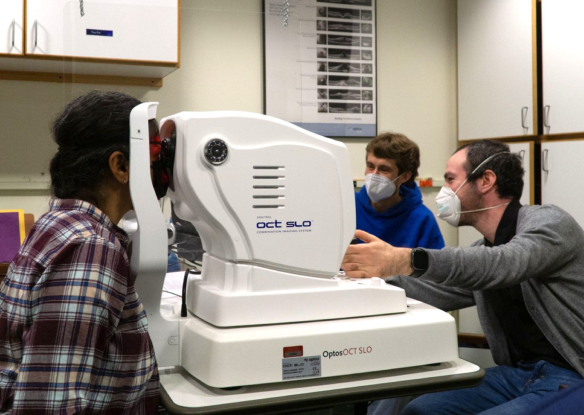
These short chapters summarize insights that I have gained from more than four decades working in vision rehabilitation.
They provide a broader perspective that may be missing in our daily routines, when focused on specific details.
Vision involves much more than visual acuity alone. Vision serves our understanding of the environment and our ability to interact with it. To improve all aspects of that interaction is the mission of Vision Rehabilitation.
Comments, questions and suggestions are welcome.
(1) How blind is Blind? PDF
The dichotomy sighted / blind cannot describe the continuum of vision loss.
We should emphasize what remains, rather than what is lost.
(2) Ranges of vision loss PDF
Developing meaningful ranges of visual ability, requires a logarithmic scale.
The dividing lines provide useful markers along a continuous road.
(3) Aspects, two points of View PDF
How the EYEs function does not define How the PERSON functions.
Our point of view determines the aspects we see.
(4) Stages of visual processing PDF
Most of visual processing happens in the brain, beyond the optics of the eye.
Some parts are conscious; many important parts are autonomous and sub-conscious.
(5) The Mental Model PDF
Perception and action are based on a Mental Model of the environment, which results from
the interaction of top-down (interpretation) and bottom-up (retinal input) information flows.
(6) Assessing Detail vision PDF
Letter chart acuity assesses only vision at the point of fixation.
It can be reported on several different scales. Visual acuity is one of these scales.
(7) Assessing Surround vision PDF
Surround vision describes vision beyond the point of fixation.
Since most inputs are processed sub-consciously, patients are often unaware of deficits.
(8) Assessing Contrast vision PDF
Contrast vision is not an independent variable; it interacts with detail- and surround-vision.
Measuring the effect of reduced contrast is more meaningful than threshold contrast.
(9) Assessing Visual abilities PDF
Disability and its rehabilitation require a different assessment methodology.
Rehabilitation requires an ability profile to set priorities.
Population studies and various regulations often require one overall ability score.
(10) Estimating Visual ability PDF
The Functional Vision Score estimates visual ability from visual impairment measurements.
It is best suited for applications where statistical averages hide individual differences.

